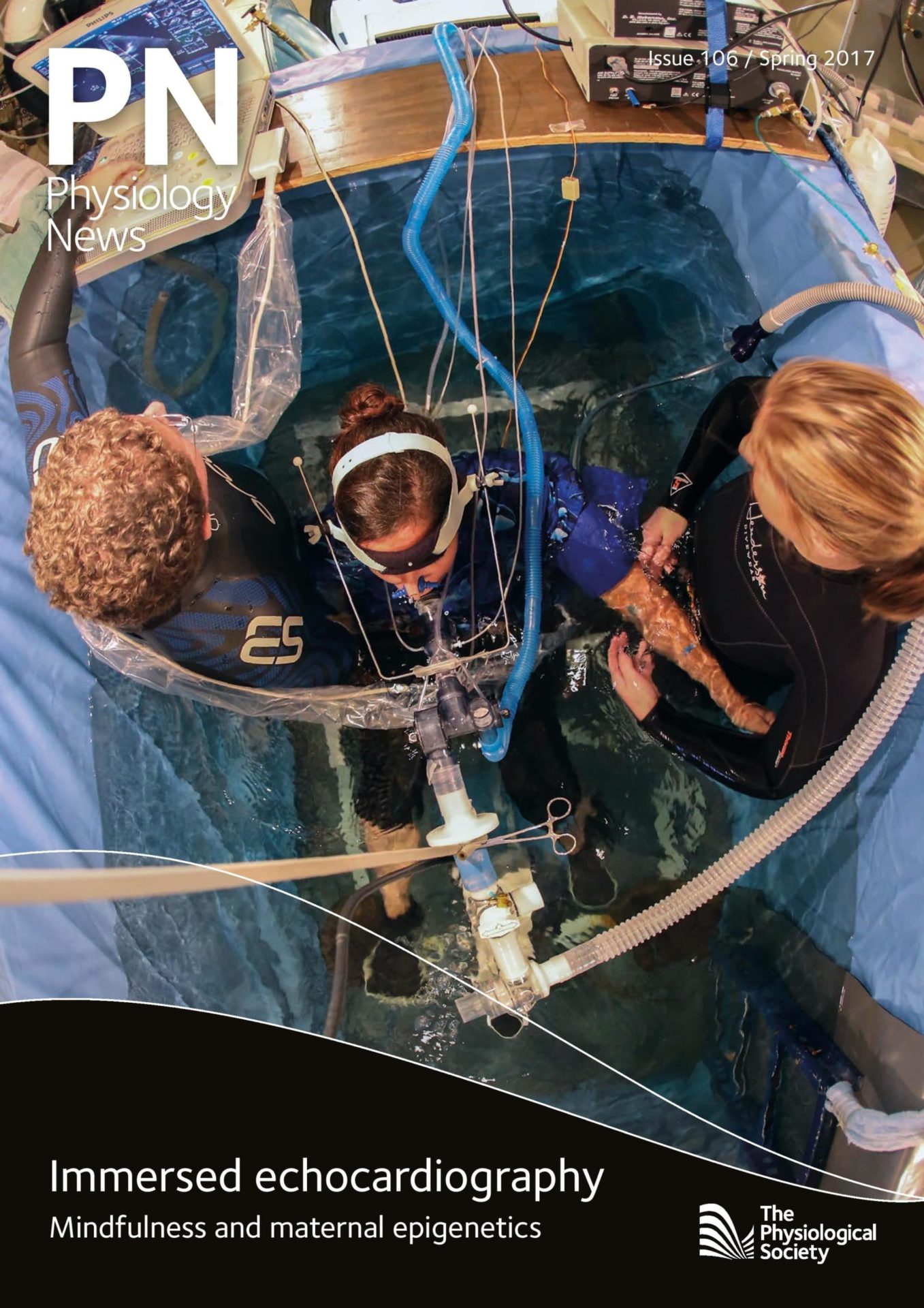
Physiology News Magazine
Editorial
News and Views
Editorial
News and Views
Roger Thomas
Editor
https://doi.org/10.36866/pn.106.5
This issue is the eighth since my appointment as editor, but this is only my sixth editorial. I am really still unsure what sort of essay I am supposed to write. Is there really any point in my mentioning some of the selected contents? You the reader can see the list of contents on page 3, and indeed may well have gone straight to an article that you hope is interesting. I suspect that my editorials are quite often not read at all. Indeed, when friends mention that they enjoyed the magazine and are later surprised to learn of my stair downfall a year ago, I know they did not read the editorial in PN 102 even though my photo sported a black eye. One article in this issue I particularly enjoyed for its revelation of a new aspect of Andrew Huxley’s research is that by Jonathan Coles. The long article on mindfulness was also intriguing. Ken O’Halloran has given full rein to his sense of irony in his article on meetings. We also include a new item – a page of answers to questions that the authors remember being asked quite often. New questions welcomed!
I have recently attended several research talks given by people aspiring to a lectureship, and have been again saddened by the poor quality and style of some of the presentations. The most fundamental mistake is to have too much information on each slide. Often there are as many as six different graphs or diagrams, usually pasted from manuscript figures. The font is often too small to be readable from anywhere except the front row, and the different bars or lines are not explained clearly. Are the presenters only used to talking to very small groups? Do they think that slides still cost money? I was trained during my PhD to have only one experimental result per slide, and to check that all details were legible from the back of a medium-sized lecture theatre. I later learned to speak as clearly as possible, by giving talks to non-native English speakers. Ideally, slides should be understandable by people who can understand written English much more easily than spoken. Labels on slides should be as detailed as possible, and avoid acronyms.
Are PhD students still trained to make clear presentations? A senior Member tells me that he gives the PhD students in his department a talk entitled, ‘How to give a really bad talk ‘. He shows some of the most common mistakes. These include bizarre colour schemes so the text can’t be seen against the background; multi-panel figures, especially when only one of the ten panels is relevant to the talk, etc, etc. Sadly, he has come to the conclusion that many people don’t want to communicate but, rather like dogs urinating on lamp posts, they only want to mark out their (scientific) territory. Most PhD students are required by their funders to give annual talks of some sort, so all departments do something, but the format varies.
Sometimes there is an away-day event at which all students are required to talk, other places have student talks in weekly slots mixed with other speakers. Postdocs, however, are often not well catered for. One of The Society’s representatives mentioned that she was involved in organising a UK conference and wanted to invite several postdocs as it was good for their careers. But she was asked by co-organisers to invite only PIs as postdocs tended to give poor talks. Her co-organsisers didn’t seem to see that unless postdocs are given the opportunities to give talks, they won’t learn the necessary skills! Another rep reports that in Scotland, several researchers were worried about the lack of speaking opportunities for young researchers so set up the Scottish Neuroscience Group, which has an annual meeting on the last Friday of August each year. It has now been running for about 13 years, and about 180-200 people attend each year. Each of the six participating universities proposes two speakers – one PhD student or postdoc and one other.
Another correspondent remembers that, ‘When I came to the UK just over 20 years ago, it was the opportunity at PhySoc meetings for PhD students and young postdocs to give oral presentations at a real ‘tough’ scientific meeting that set it apart from our situation in Germany, and I thought it was brilliant’. Such opportunities are now rare. But there are moves to have more ‘Early Career‘ meetings sponsored by the Meetings Committee. So far I believe there is only one such meeting a year, but surely there could be more. Last year’s was in Dublin, and Otto Hutter was the keynote speaker. Oddly, I can find no mention of this meeting in the main meeting programme book, but we did publish a photo of the organisers in PN 104, page 21.
The Society could alternatively simply publicise the many departmental one- or two-day events already occurring up and down the country, and perhaps take steps to encourage better-quality presentations by agreeing to publish on a website the abstracts of the best talks. They could also stop supporting visiting speakers and switch the money to support postdoc talks.
Until the 1990s, The Society met annually in Cambridge, and key organisers behind the scenes were Alan Cattell and Paul Frost, who are both retiring this year after 47 years in the department of first Physiology then PDN. The many members who remember them will wish them a long and happy retirement.
